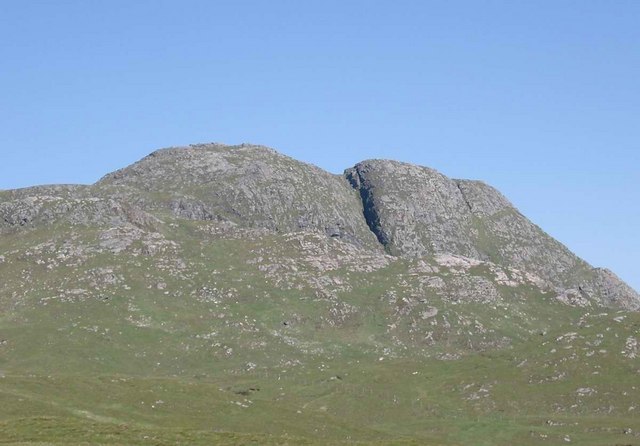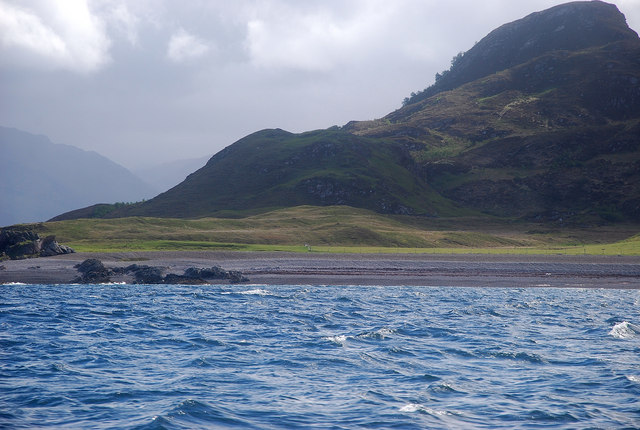![]()
![]()
Knoydart 1978.
KNOYDART (Samadalan) 1978 Group L (17 yrs +) 25th Jul - 13th Aug.
LEADER:-Jim Turner
ASSISTANT LEADERS: Alan Smith, Judith Smith, Liz Wallace,
Colin Smith, Janet Mott.
MEMBERS:-Colette Armitage, Brian Barnes, Julia Coate, Nicholas Hazlitt, Michael Johnson,
Ian Macleod, Judith Pielou, Julie Salt, Nicola Steam, Christopher West, Mark Bankes, Rosemary Clegg, Ian Gartside,
Susan Irons, Richard Juckes, Angela Newton, Nicholas Roberts, Sue Scanlan, Stephen Webster, John Charlesworth.
LEADER'S REPORT
|
The expedition to Knoydart was an adventure from the start. Thanks to British Rail half of us reached Mallaig very late, but thanks to the efficiency of our hired boat operator , the journey from Mallaig to our camp went without a hitch. I suppose that anyone who has to live with the disruptions caused by the Hebridean weather finds British Rail no problem. The site of our camp was at Shamadalain in a north facing bay on the west edge of the Knoydart peninsula. In days gone by when the sea was a highway Knoydart must have been a very different place with numerous crofts around its shores - there's a man living in Inverie (the main settlement on Knoydart) who remembers when the beach in Sandaig bay was completely covered with boats on the sabbath. The main attraction for us on Knoydart were the mountains which we climbed enthusiastically. Three of our number succeeded in ascending over 10,000 metres during our stay. We picked whimbrels from the mountains, we sunbathed on the mountains, we became enshrined by clouds on the mountains and we saw the far away islands and Ben Nevis from the mountains. The boats were used every day - people fished from the rubber dinghy (even feeding the entire expedition on one occasion), learnt canoeing techniques and explored the coast by canoe. |
We met people who live on Knoydart and we met other visitors to the place. The district nurse who lives at Airor was out main contact with the outside world and we were grateful for the numerous cups of coffee - to say nothing of all the medical attention we received. Not much project work was accomplished, but with so many expedition members with exams just completed who can blame them? Browsing through the signing-out book I see that birds were listed, flowers identified, geomorphological features noted, meteorites plotted, trees scrutinised, winkles' routes mapped, rubbish collected and panoramic views sketched. The following entry described what two members (of the same sex I hasten to add) did on 31at July - "Direct to MR 729048 for shower, back by 12.00 midday." As always, the time for departing came too soon, and so on Saturday, 12th August we waved goodbye to Knoydart and the Hebrides for another year. Jim Turner |
|
|
Eilean Shamadalain, Rain approaching across the Sound of Sleat 14/07/2007 © Copyright Jonathan Long |
Sheep grazing at Inverguseran, Knoydart lamb! 07/05/2006 © Copyright Sheila Russell |
CLIMBING ON KNOYDART
|
The climbing on the expedition didn't start until about half way through, when we decided it was time we actually did something. First to suffer from our assaults were the small outcrops and boulders near Airor (715 054). We found various types of climbs to varying degrees of difficulty. This site, however, having only a limited number of routes, was soon exhausted and since everyone interested wanted to do some climbing of greater length and interest, we decided to go to Roinn na Beinne (737 025). It was a very misty day when we set off and remained so all day. Needless to say, we were wandering around long after we should have been at the crag. Eventually we stumbled across Alan Smith and Mark Bankes who were going to bag yet another peak (Beinn Bhreac), so Brian Barnes went with then to see the crag, while the rest of us, discouraged by the weather, returned to camp. The next day Sue Irons, Colin Smith, Brian Barnes and myself went to the elusive crag which Brian had been raving about the evening before. As it was a clear day, we managed to get there without much trouble. While Colin showed Sue the ropes (and some rocks as well), we tried to put up some routes. After trying three on damp, mossy rock without success, I managed to lead a wide crack about 35 feet high. It was quite straightforward until the top few feet which were negotiated by using a large flake which was wedged in the crack. When Brian got to it, he started to pull up on it, but instead of his body rising, the block moved downwards. This came as some surprise to him as I'd just been standing on it, and an alternative method of bypassing the flake had to be found. To save other SHS members and to satisfy his own destructive urges, Brian insisted on abseiling down and removing the flake. (We now wish to notify the Ordnance Survey that the map needs amending -not only is part of the crag missing, but there is also a sizeable crater in the ground.) |
 Roinn na Beinne, This little peak is an excellent viewpoint in Knoydart. 11/06/2006 © Copyright Gordon Brown |
 |
While we were there, we decided to try an artificial climb using pitons. A carelessly hammered in piton caused me a great deal of trouble as it took me nearly forty minutes to remove. The whole climb must have taken about an hour and a quarter (all twenty-five feet of it). Anyway, we enjoyed the day and Brian became known as Blaster Barnes and I earned myself the name Knock-em-in Nick. We planned to return the next day. but due to the distance involved (it's uphill all the way) and the fact that Liz Wallace (our Camp Administrator) had seen some good climbs at Camas Garbh (746 085), we decided to go there. Before you reach Camas Garbh, there is a miniature version of the Old Man of Hoy (the Old Man of Knoydart, fifteen feet high). The first route up it was done in wellies, showing its extreme severity. Also en route is a smaller outcrop (745 082), which yields some good practise climbs, including a very good overhang problem (if you like that sort of thing). The rock at Camas Garbh itself isnít very good and needs treating with caution, but we did manage to find some routes, the best being quite exhilarating and at fifty to sixty feet high and overhanging most of the way, quite difficult. That Just about covers the places we climbed at, except for perhaps the ruined bithy at the camp. Apparently no climber has really accomplished anything unless he (or she) can traverse all the way around it, without using the ground for feet, or the top of the wall for hands. I can proudly claim to have done one and a third revolutions of this classic problem. |
|
Camas Garbh, beautiful bay in a remote corner of Knoydart. 11/05/2011 © Copyright Glen Breaden |
The climbing that was done on the expedition was certainly enjoyed but the lack of reasonably sized crag fairly nearby ended all hopes of more serious climbing without several days away from camp. NICK ROBERTS, BRIAN BARNES |